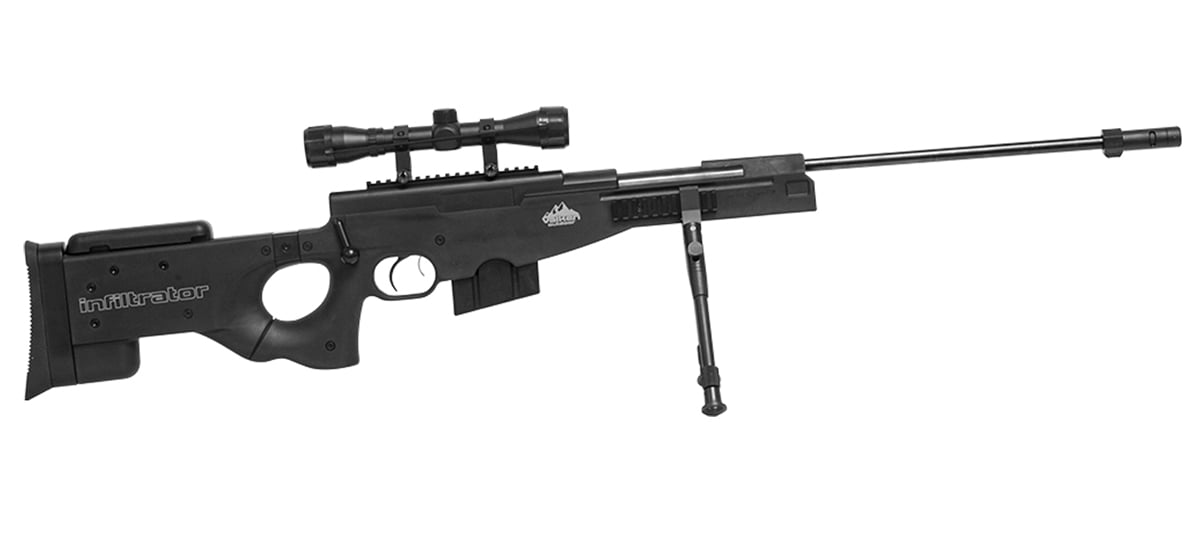Regarding dealing with pest issues safely and effectively, pellet rifles have become a viable option for numerous homeowners and enthusiasts. https://telegra.ph/Pellet-Guns-vs-Conventional-Firearms-Essential-Information-You-Should-Have-03-18 combine accuracy and strength, making them a great choice for handling nuisance pests while lessening the effects on the ecosystem and surrounding wildlife. As the awareness grows among many see the advantages of pellet guns for pest management, understanding what to look for in a quality model becomes essential.
In the following guide, we'll explore various aspects of pellet guns, covering how to choose the right power source, caliber, and characteristics ideal for pest control. Whether you're an experienced shooter or a beginner seeking to make educated choices, this comprehensive overview will assist you in navigating the pellet gun world and find the perfect match for your needs. Be prepared to enhance your pest control methods with the right pellet gun in hand.
Selecting the Appropriate Air Gun
Choosing the right pellet gun involves knowing your particular needs and requirements. Consider the chief use of the gun, be it for pest control, target shooting, or small game hunting. Each of these purposes may require different features and characteristics. For pest control, you may prioritize quiet operation and accuracy, while for target shooting, consistency and ease of use could be more crucial. Spend time to think about the environments where you will use the gun, as this can impact your choice.
Another important factor to take into account is the power source of the pellet gun. Possibilities include spring-powered, CO2, and PCP (pre-compressed pneumatic). Each type of power source has its benefits and disadvantages, such as ease of use, maintenance needs, and power consistency. For instance, spring guns tend to be more affordable and easier to maintain, whereas PCP guns offer greater power and accuracy but can be more complex and costly. pellet air pistol of experience and comfort with each type may also have a role in the decision-making process.
Lastly, you should pay attention to the caliber of the pellets used. Common calibers include .177 and .22, with each providing different benefits in terms of speed, accuracy, and stopping power. .177 pellets are often preferred for target shooting due to their higher velocity, while .22 pellets can be more effective for pest control and hunting larger small game. It’s crucial to align the caliber with your intended use and make sure that the pellet gun you select allows for best performance in your chosen application.
Key Features to Consider
While selecting a pellet gun for pest control, an important feature to consider is the power source. Consider coil, CO2, or PCP, which each offers unique advantages. Spring guns offer simplicity and reliability, while CO2 models offer consistent velocity and ease of use. PCP guns, in contrast, are known for their high power and accuracy but require a bit more investment and maintenance. Understanding the power source will directly impact the gun's performance and your shooting experience.
Additionally, an important factor is the caliber of the pellet gun. Common calibers include .177 and .22, which serve different purposes. A .177 caliber is typically favored for target shooting and small pests due to its high velocity and flatter trajectory, making it effective for longer distances. On the other hand, the .22 caliber delivers greater stopping power, making it a better choice for larger pests. Selecting the right caliber will enhance your effectiveness in pest control scenarios.
Finally, consider the gun's accuracy and range. Look for features such as adjustable sights or the option to mount a scope, which can significantly improve your precision. The effective range of a pellet gun also plays a role in your choice; ensure that it aligns with the distances you will be shooting. By prioritizing these important features, you can find a pellet gun that meets your specific needs for pest control while providing a satisfying shooting experience.
Types of Pellet Guns and Their Uses
Pellet guns come in different varieties, each designed for specific uses and user preferences. The most common types are spring-powered, CO2-powered, and PCP (precharged pneumatic) guns. Spring-powered pellet guns are well-liked for their dependability and ease of use, making them suitable for novices and recreational shooters. They use a spring action to propel the pellet, requiring a cocking movement before each shot. On the other hand, CO2-powered guns offer semi-automatic functionality and a consistent power output, making them great for shooting at targets and informal shooting. PCP air rifles are favored for their superior precision and power, making them well-suited for hunting and competitive shooting.
When it comes to hunting small animals, specific pellet gun types play a key role. A break-action or pump action pellet gun can be highly effective, providing sufficient power and precision needed for ethical hunting. These guns usually have a greater feet per second, allowing for effective range with the correct caliber pellets. Choosing a silent version can also be important for backyard environments or hunting locations where sounds could deter game animals. Understanding the particular applications of different pellet gun types helps ensure you choose a model that aligns with your needs.

For shooting enthusiasts, the choice of pellet gun can greatly affect shooting performance. Precision models with customizable sights and light designs are best for precision shooting. Additionally, features such as low recoil and suitable optics can improve the shooting experience. The choice of ammunition, including caliber and type, further impacts precision and performance. Knowing the varying types of pellet guns and their optimal uses assists shooters in finding the best match for their shooting activities and preferences.
